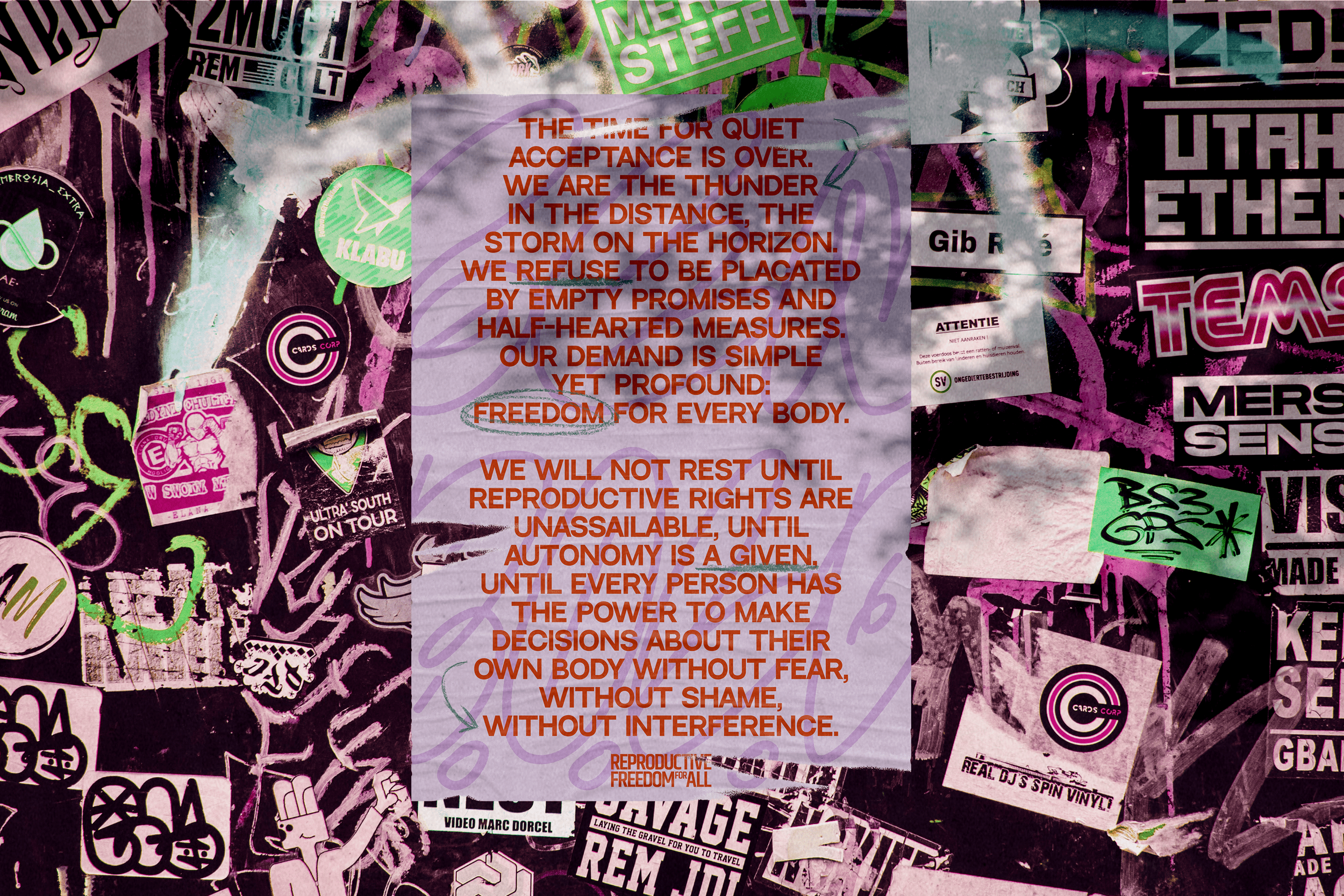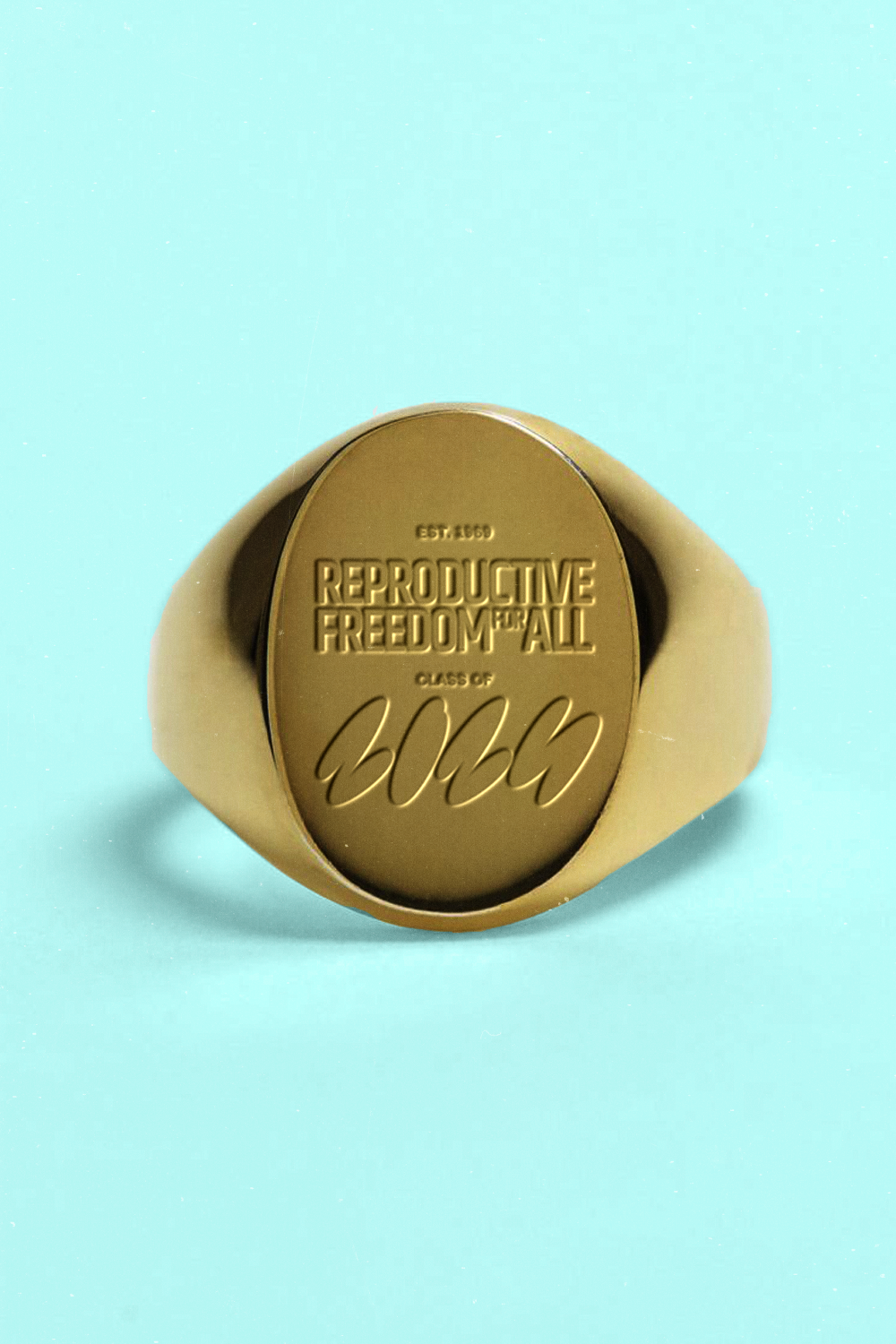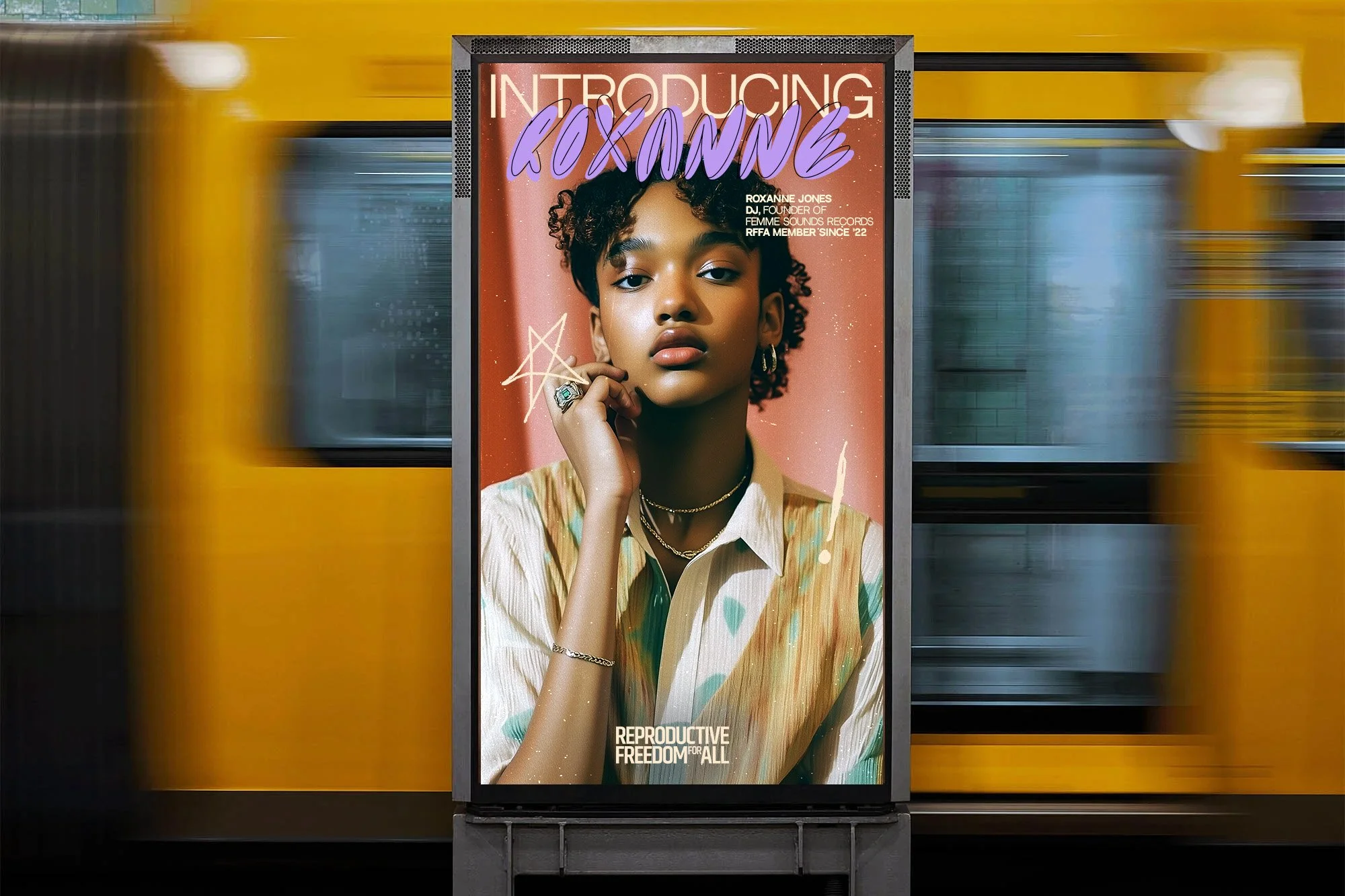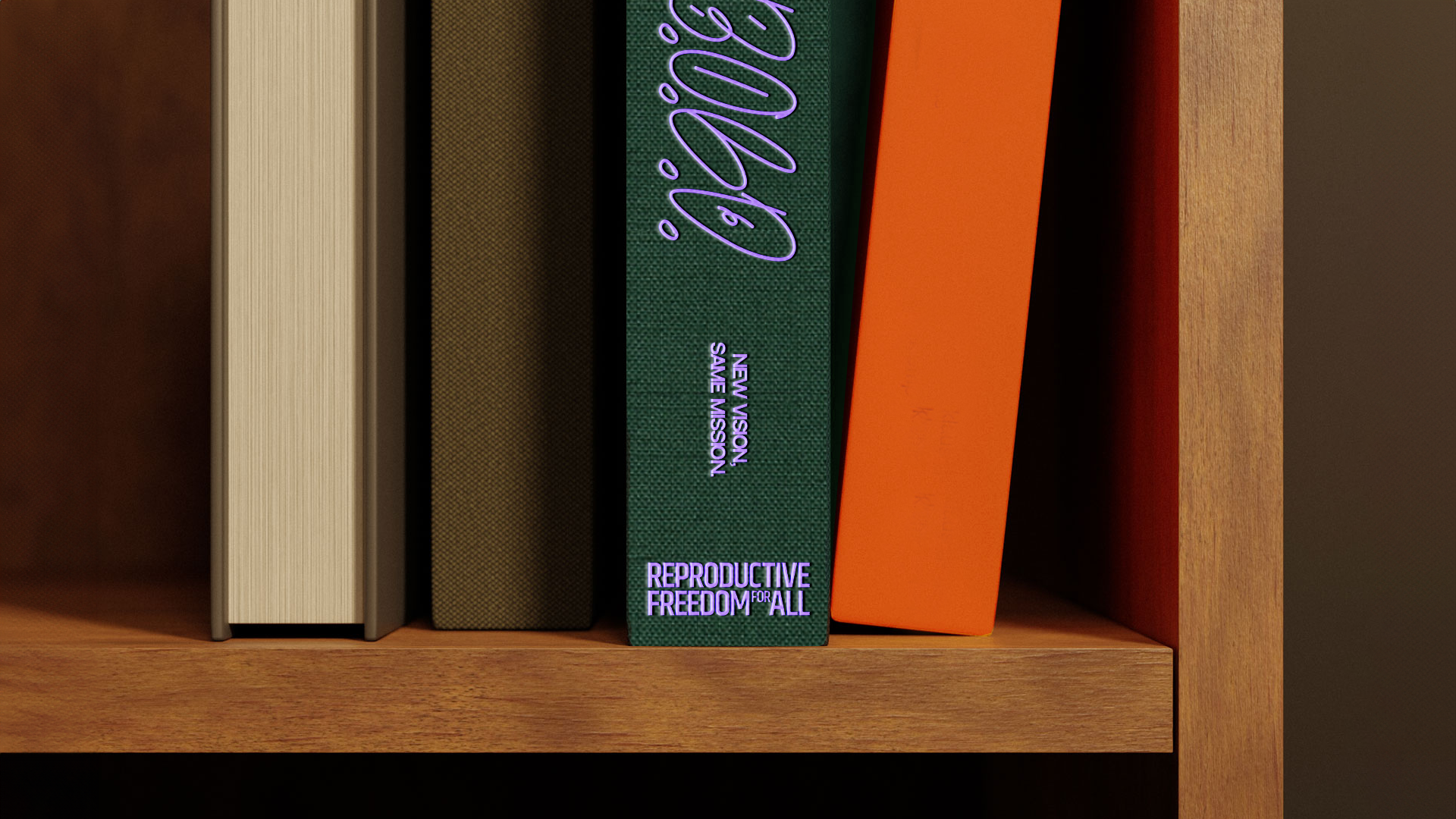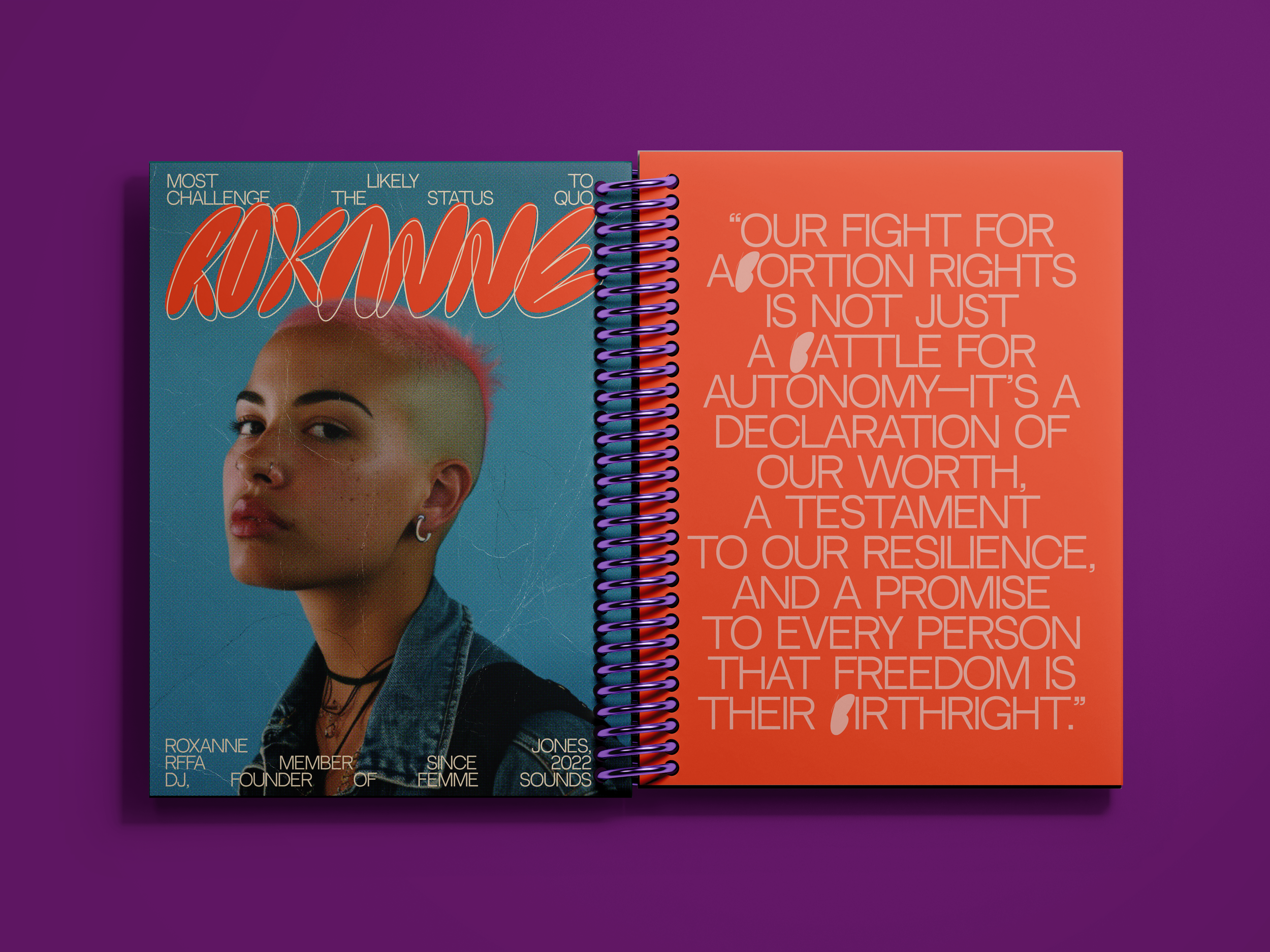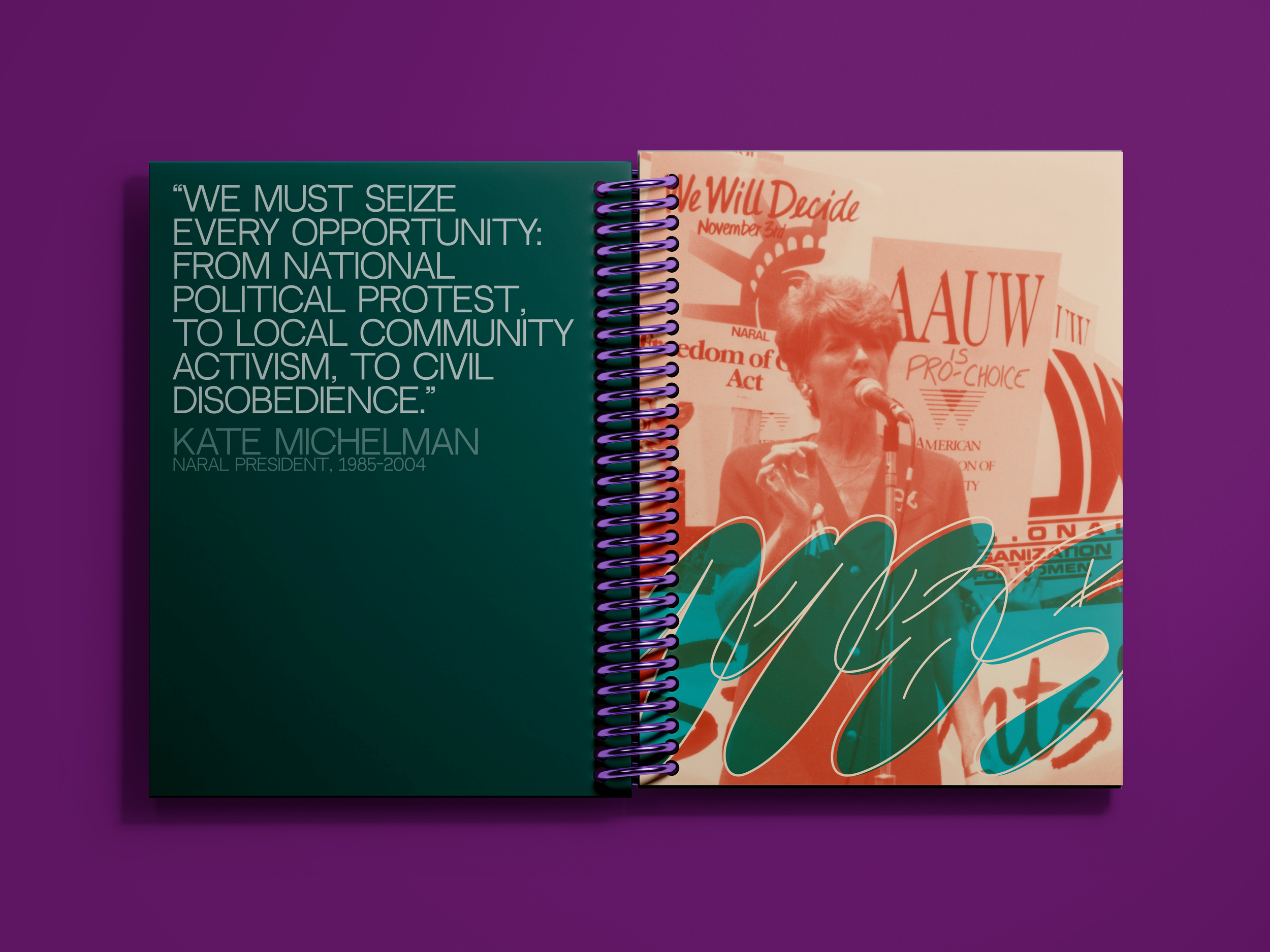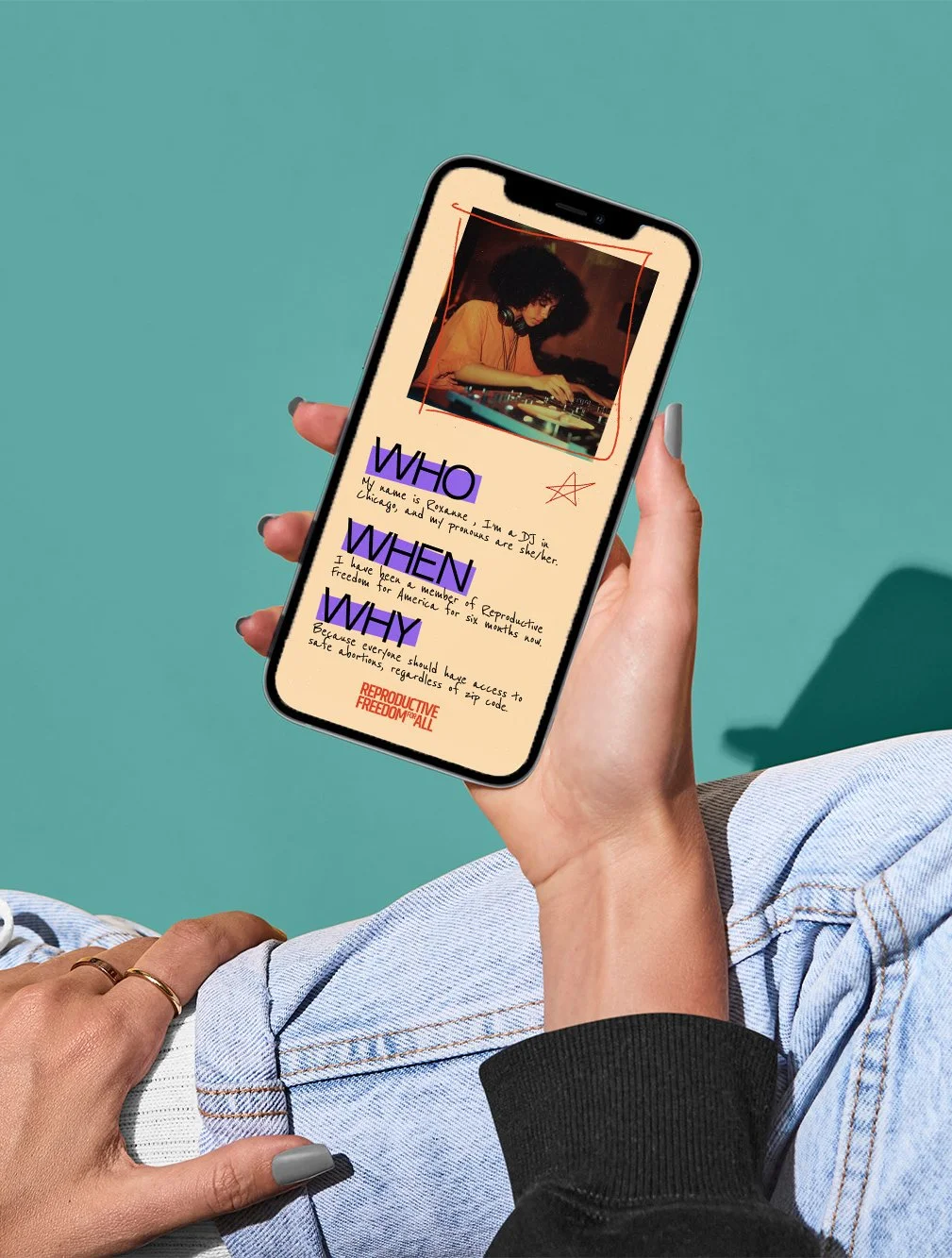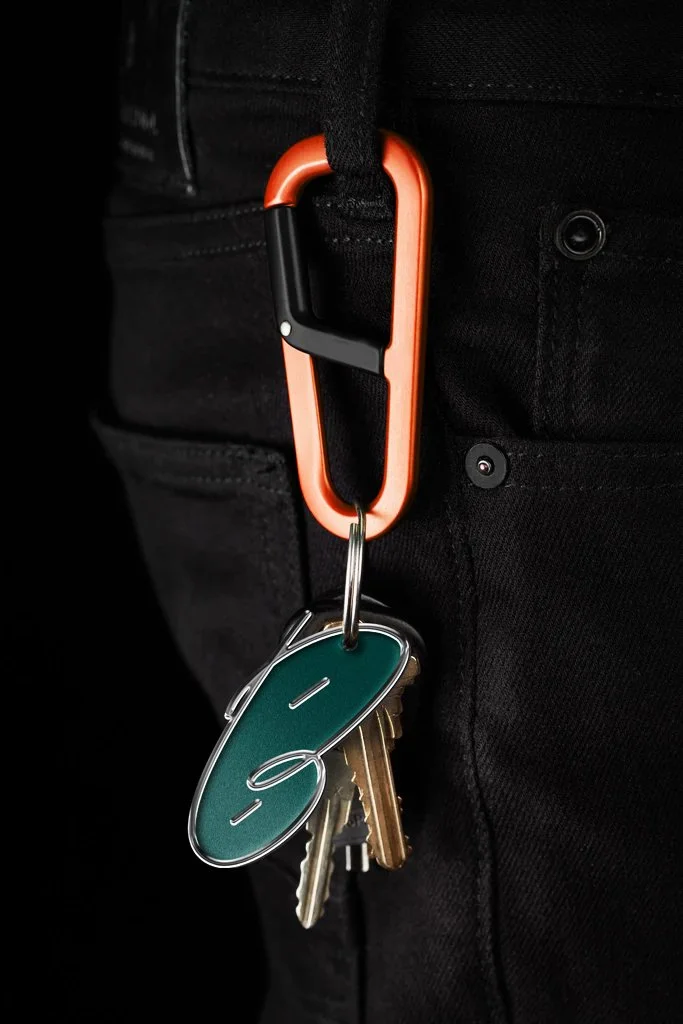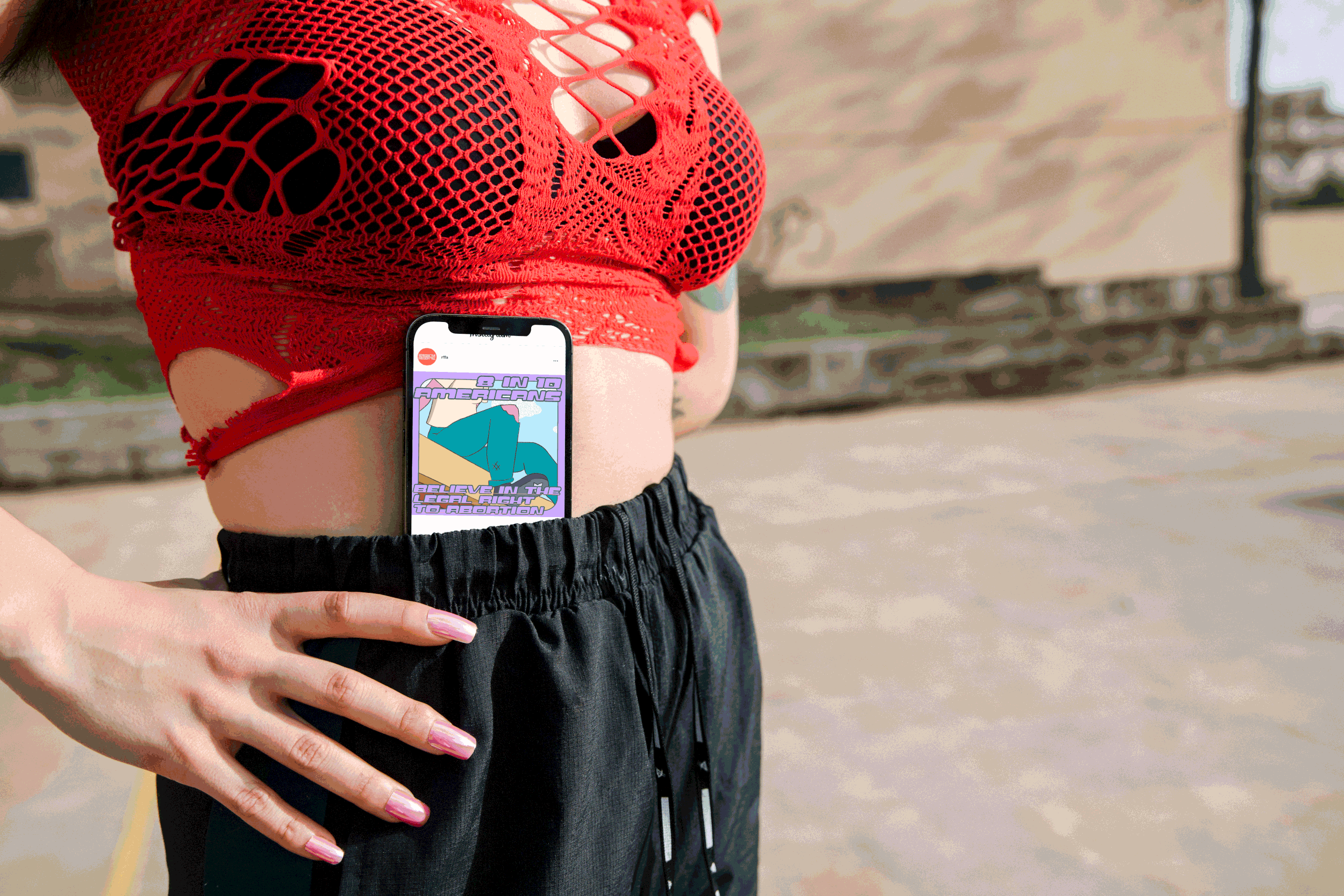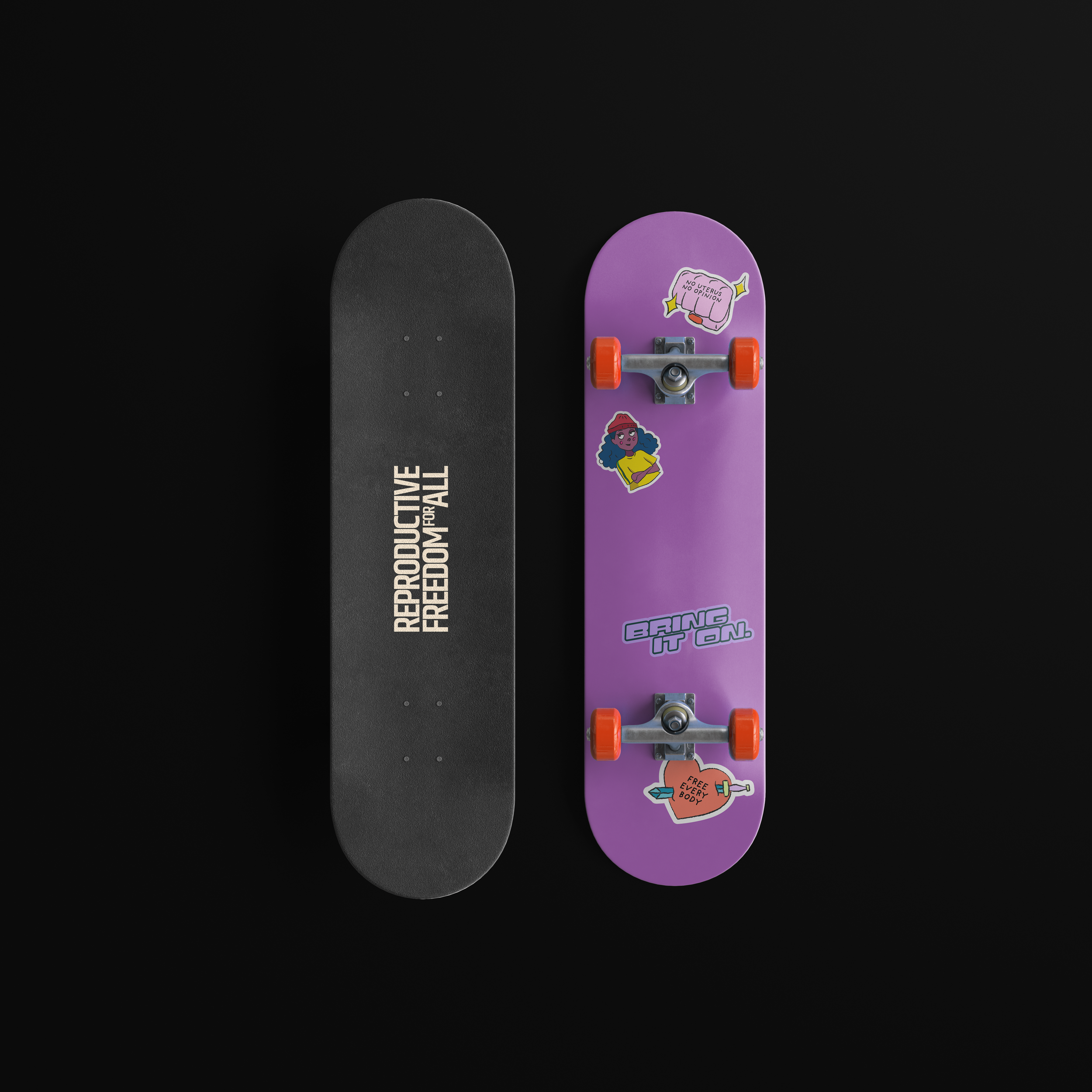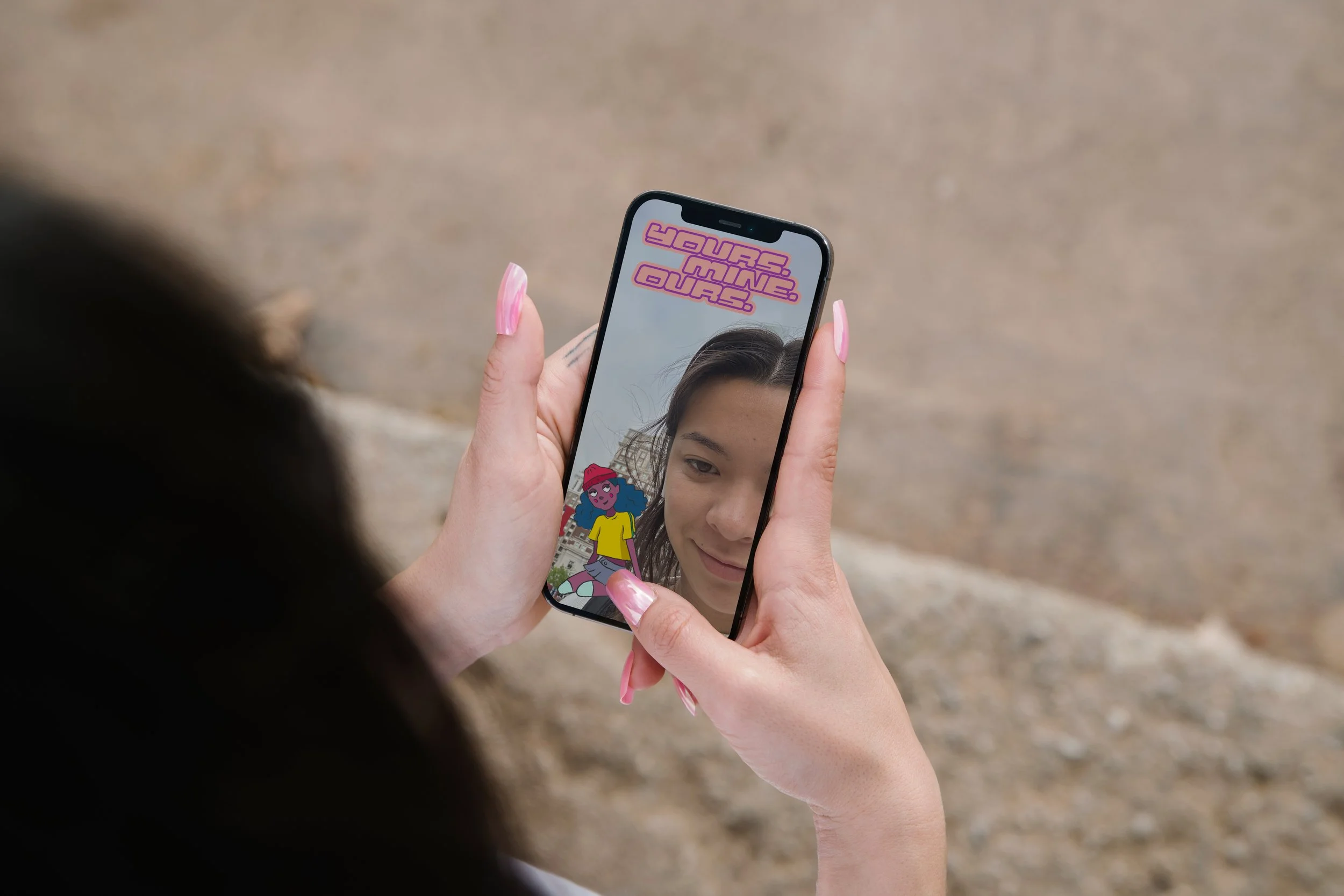Reproductive Freedom for All Campaign Concepts
With NARAL (the National Abortion Rights Action League) evolving into Reproductive Freedom for All (RFFA), the organization came to us seeking a bold, unapologetic, warm, and joyous way to introduce its new name on social platforms.
As a lead designer on campaign development, my task was to develop the creative directions and define the visual strategy that would unite RFFA’s established audience with a new, younger audience, highlighting an intersectional approach to reproductive freedom.
To help RFFA explore how to introduce its new, intersectional name, I developed two conceptual directions as potential creative strategies rather than finished campaigns. Both proposals were designed to spark boldness, community, and inclusivity, essential hallmarks of RFFA’s broader mission.
Generation B.O.L.D
Generation B.O.L.D. drew on the nostalgic charm of yearbooks to build an approachable, inclusive look for the NARAL’s new name and strategic identity.
By weaving together Polaroid-like snapshots, doodle-style annotations, and bold typography, this direction aimed to spark a sense of collective belonging—inviting both longtime supporters and newcomers to see themselves in RFFA’s history and its forward-thinking mission. Generation B.O.L.D. celebrated personal stories and generational continuity, demonstrating how reflection on the past can energize the fight for reproductive justice today.
Drawing on nostalgic yearbook charm — complete with Polaroid frames, hand-drawn doodles, and vibrant typography — this concept invited the use of RFFA’s rich archives while tapping into a modern youth culture fascinated by retro aesthetics. By highlighting how reproductive freedom intersects with racial, gender, and economic justice, and weaving in historical photos and stories, the creative direction found fresh relevance for both longtime supporters and younger audiences.
The final visual concept struck a friendly, playful tone that bridged the gap between honoring RFFA’s storied heritage and the present-day obsession with nostalgia.
Blending yearbook throwbacks with RFFA’s broader reproductive justice vision felt like uncovering a bridge between past and future — an unexpected but deeply resonant connection. There was something quietly powerful in pairing nostalgia with activism, in letting familiar echoes of the past shape a bold statement about what comes next.
Even without a public campaign rollout, it felt like uncovering a necessary question for the organization: How do we honor where we’ve been? And how courageously do we step into what’s ahead?
Bring It On
To complement the warm nostalgia of Generation B.O.L.D., we also developed a dynamic, youth-oriented campaign direction that harnessed the energy of cartoonish video game visuals — encouraging supporters to view reproductive freedom as an exciting, collective challenge they could “level up” and conquer together.
Enter Bring It On: inspired by the playful energy of retro arcades, this direction channeled the excitement of 8-bit worlds and pixel-styled graphics. Bright palettes, humorous illustrations, and custom avatars set the stage for a campaign that framed activism as a high-stakes quest — where building intersectional power was the ultimate prize. By fusing gaming references with RFFA’s core values, “Bring It On” aimed to galvanize a new cohort of voters, activists, and partner orgs ready to press start on the fight for reproductive justice.
This campaign concept introduced a dynamic mix of short animated videos, custom avatars inspired by RFFA heroes, and an engaging set of social media filters and stickers.
Visually, it leaned into pixelation, neon palettes, and illustration styles rooted in familiar video game aesthetics. With headlines like “New Player Joined,” the concept framed the movement as a collective adventure — where every individual brings a unique power-up to the fight for reproductive justice.
Looking back on these creative directions, I’m struck by how they helped Reproductive Freedom for All transition from NARAL’s legacy to a fresh, intersectional identity—one that felt cohesive, celebratory, and inclusive. The nostalgic art direction bridged generational gaps, uniting and energizing both established and new audiences around the role intersectionality can play in the future of reproductive freedom.
Leading the design on this project reminded me that well-crafted visuals can amplify complex social messages, fostering genuine conversations about broader freedoms. By infusing warmth, joy, and community into every concept, I aimed to show how thoughtful creative direction can elevate and reshape a brand’s story, ultimately underscoring the power of design to unite people across backgrounds and perspectives.
EDIT THIS BLOCK TO CHANGE BACKGROUND COLOR
and image borders

